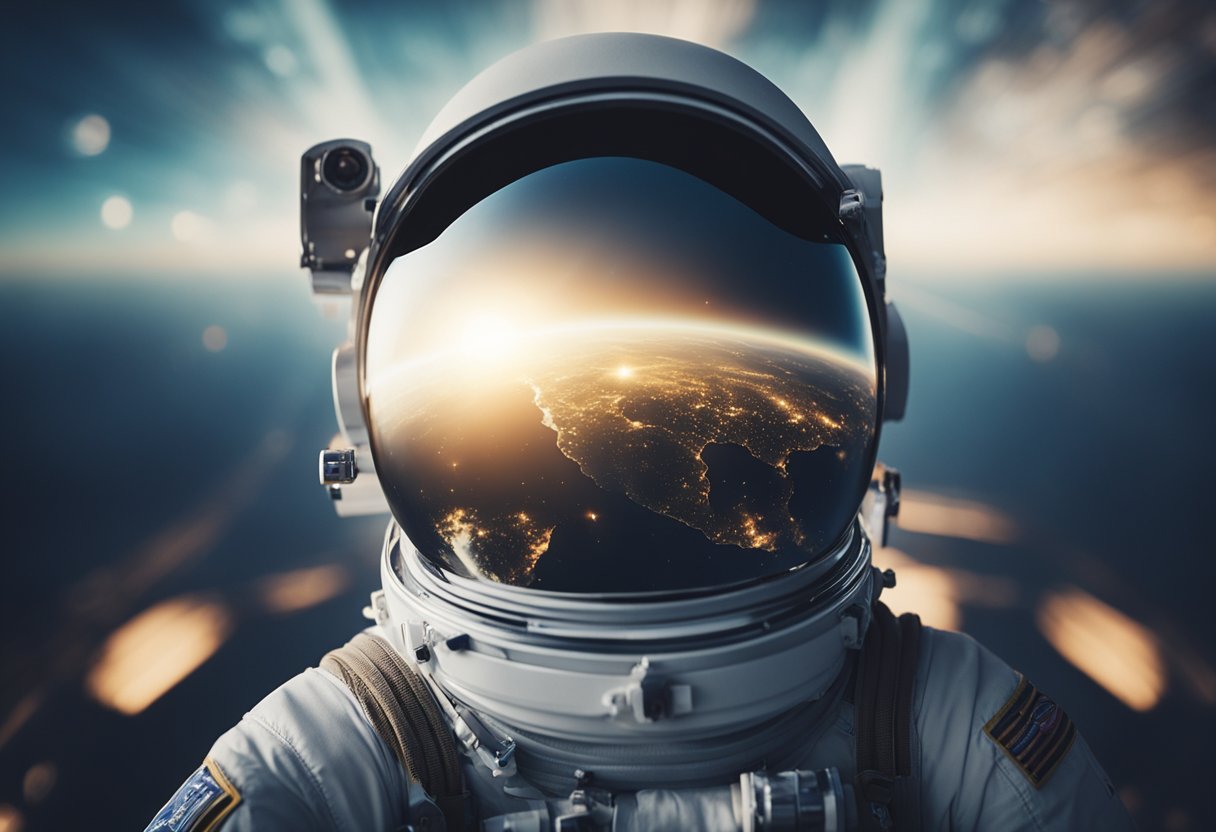
Effects of Space Travel on the Body: Space travel stands as an extraordinary achievement of human innovation, propelling us beyond the confines of Earth and into the expanse of the cosmos. As we reach further into space, it’s crucial to understand the toll that such journeys can take on the human body. The absence of gravity, or microgravity, has profound effects on physiological systems. Muscles atrophy and bone density decreases when the constant resistance of Earth’s gravity is no longer a factor. Consequently, astronauts need to undertake rigorous exercise routines to mitigate these effects.
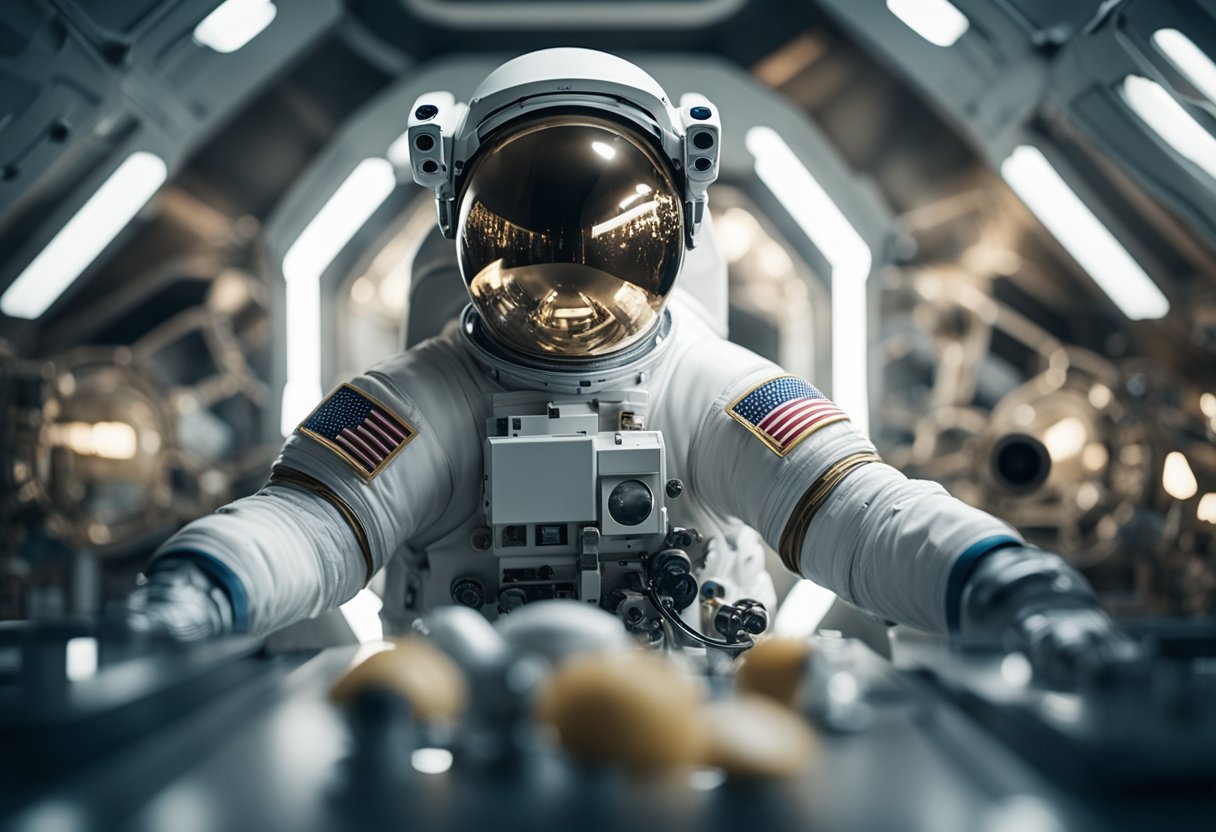
The hazards posed by cosmic radiation introduce additional risks to the health of space travellers. Without the protective shield of Earth’s atmosphere, astronauts are exposed to higher levels of radiation that can increase the risk of cancer and other diseases. The psychological and cognitive aspects also demand attention, as the rigours and isolation of space can impact mental health. Spacecraft like the International Space Station (ISS) serve as laboratories not only for scientific experimentation but also for studying the human body’s response to long-duration spaceflight, which informs the development of countermeasures and medical protocols.
Space travel is a complex endeavour that involves navigating beyond Earth’s atmosphere into what we often refer to as the final frontier. When we consider the journey into space, there are a myriad of factors we must account for, not least of which is gravity, or rather the lack of it, once we leave Earth.
Firstly, we have to master the challenges of leaving Earth’s gravity well. This is achieved through powerful launch vehicles that propel spacecraft beyond the grip of Earth’s gravitational force. We term this region as low-Earth orbit (LEO), where many satellites and the International Space Station (ISS) reside.
Upon reaching space, the absence of gravity necessitates that astronauts adapt to a microgravity environment. This affects everything from personal movement to the operation of equipment. In this environment, we find that the human body undergoes various changes, including muscle atrophy and bone density loss.
Furthermore, we carefully plan missions with awareness of gravity fields of celestial bodies. Missions to the Moon or Mars, for example, require intricate manoeuvres to enter and exit their respective gravity wells. The NASA-led Artemis program, aiming to return humans to the Moon, and the ambitions for Mars travel involve planning for these gravity-dependent approaches.
When we speak of spaceflight and space travel, particularly with a view toward future space tourism as detailed by SpaceVoyageVentures.com, our preparedness must extend to deep space missions as well. Here, away from the relative safety of LEO, we encounter additional hazards such as cosmic radiation and isolation.
Our understanding and expertise in matters of space travel continue to evolve as we push the boundaries of what’s possible, aiming for sustained human presence not just in orbit, but on other worlds and potentially aboard lasting habitats.
In the unique microgravity environment of space, the human body experiences significant changes. Among these, alterations in muscles and bones, circulatory and cardiovascular systems, and vision are the most pronounced.
Microgravity leads to a condition similar to osteoporosis, where bone density decreases due to a reduction in mechanical stress. Our bones thrive under gravity’s influence; without it, bone loss occurs at an accelerated rate. Studies have shown that astronauts can lose up to 1-2% of bone mass per month. Moreover, muscle atrophy is a common issue, as the lack of gravity means our muscles are not required to support the body’s weight. This results in a decrease in muscle mass, particularly in the legs and back.
Our cardiovascular system is also affected by the transition to a microgravity environment. On Earth, gravity helps maintain blood flow and distribution, including the return of blood to the heart. In microgravity, blood and other fluids redistribute towards the head, which can lead to facial puffiness and increased pressure in the brain. Complications may include an elevated risk for cardiovascular problems due to changes in the walls of blood vessels and a reduced ability of red blood cells to deliver oxygen.
Vision problems have been reported by astronauts during and after long-duration space flights. The microgravity environment is implicated in causing subtle changes in the structure of the eye, potentially leading to impaired eyesight. It is believed that the fluid shift towards the head may increase the pressure in the brain, affecting the optic nerve and the structure of the eye. As a result, some astronauts experience a condition known as spaceflight-associated neuro-ocular syndrome (SANS), which leads to vision impairment.
When we consider human spaceflight, one of the most critical health risks we face is space radiation. This encompasses a spectrum of ionising radiation types, including galactic cosmic rays and solar particle events.
Radiation in space is a complex mixture of charged particles, and it is far more potent than any radiation we commonly encounter on Earth. Galactic cosmic rays (GCRs), in particular, can penetrate the protective magnetic field of a spacecraft and cause significant DNA and cellular damage, which may lead to cancer. This kind of damage can also activate latent viruses, which might lie dormant in the human body, leading to further health complications.
Our primary line of defence against space radiation includes shielding strategies. Materials high in hydrogen content, such as polyethylene, are currently examined for their effectiveness in absorbing radiation. Additionally, enhancements in spacesuit design aim to offer supplementary protection for astronauts outside the spacecraft. We’re also devising operational countermeasures, such as scheduling spacewalks during times of lower radiation risk, to further protect our spacefarers.
By layering these protective measures, we aim to reduce the risks posed by cosmic radiation and support the health and safety of astronauts, whether they’re on the International Space Station, voyaging to the Moon, or embarking on future tours offered by ventures similar to SpaceVoyageVentures.com.
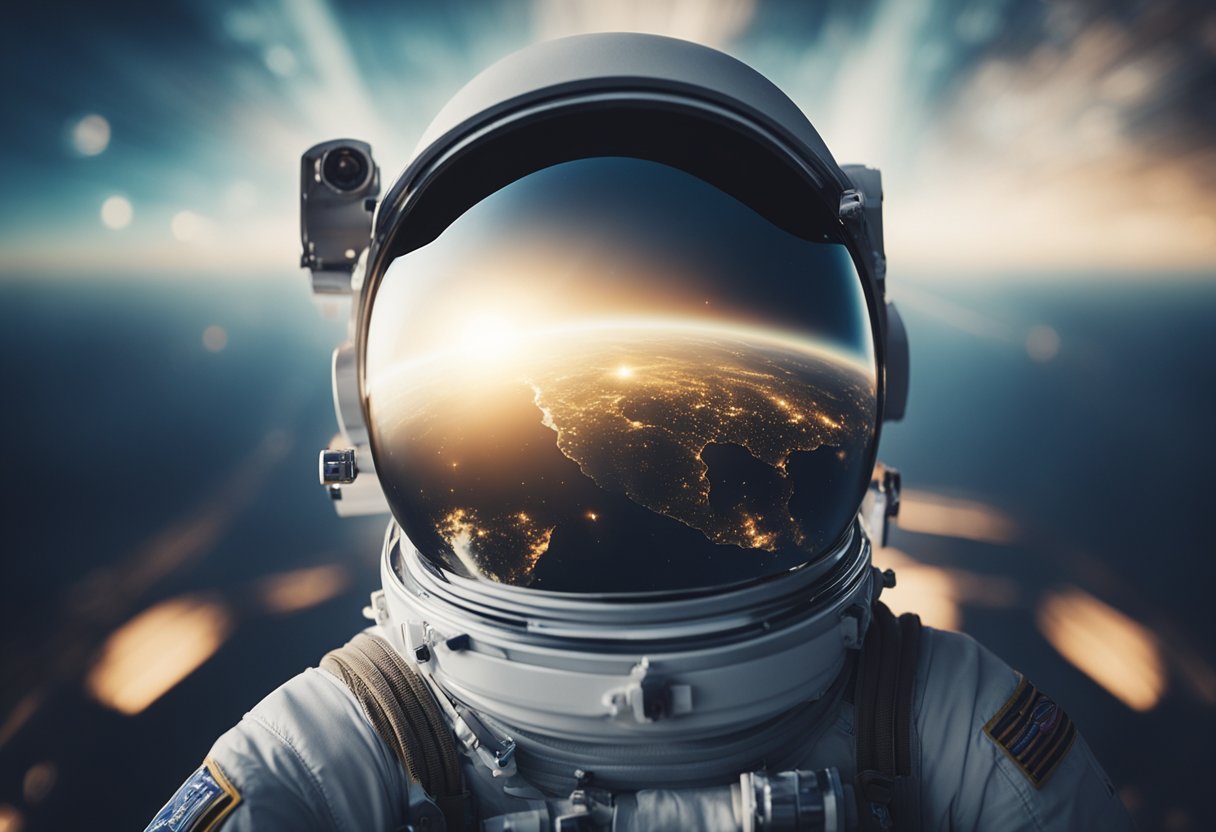
Space travel exposes astronauts to unique environmental factors that impact mental health and cognitive functioning. We now understand that prolonged periods in space can lead to significant psychological strain and cognitive changes due to isolation, confinement, and the effects of microgravity on the brain.
Isolation and confinement are inherent to space missions, often resulting in significant stress that can affect an astronaut’s mental health. A state-of-the-art review highlighted these risks, indicating alterations in behavioural health due to these stressors. Symptoms like depression and problems with emotional regulation are reported frequently, affecting the general morale of the crew. Emotional dysregulation and disrupted sleep-wake rhythms are among the most concerning issues that impact mental health during space missions.
The impact of space travel on cognition is significant, with reports suggesting changes in brain physiology and mental processes. The space environment causes notable neurological system effects, which can impair an astronaut’s ability to perform tasks requiring high cognitive demands. Aside from exposure to cosmic radiation, there’s a very real concern over decreased cognitive performance linked to the extensive time away from Earth’s environment.
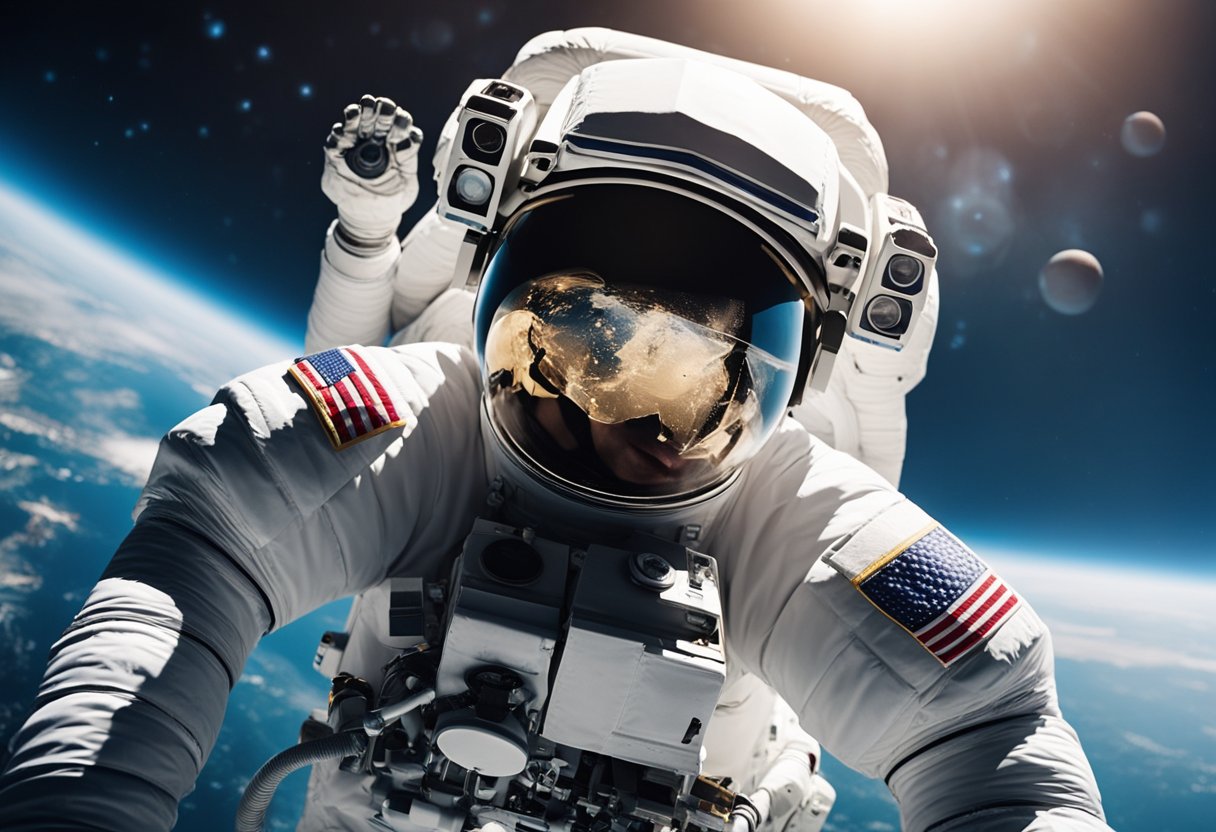
Adapting to the space environment and recovering after returning to Earth involve significant changes in the human body due to exposure to weightlessness and g-forces. We recognise the importance of both periods and focus our discussion on how exercise plays a critical role in both adapting to space and the rehabilitation process post-flight.
When we enter weightlessness, our bodies undergo several adaptations. In microgravity, muscle atrophy and bone density loss are significant challenges faced by astronauts. To mitigate these effects, rigorous exercise protocols become essential. Onboard the International Space Station, for example, astronauts follow a detailed exercise regimen that includes resistance and aerobic exercise to counteract the loss of muscle and bone. This habituation to the low-gravity environment is crucial for maintaining physiological health and minimising the risks of space sickness, which includes symptoms like nausea and loss of consciousness.
Upon re-entry to Earth’s gravity, astronauts must embark on a recovery and rehabilitation phase to recondition their bodies. Experienced effects such as orthostatic intolerance, or the increased risk of fainting, necessitate a carefully monitored recovery process. Rehabilitation strategies that address these post-flight conditions typically focus on gradually rebuilding strength and adjusting to Earth’s gravity once more. The success of recovery hinges on managing the readjustment process, often involving physiotherapists and specialised exercise equipment to ensure a safe return to pre-flight functionality.
Our understanding of the challenges and requirements for both adaptation and recovery will serve us well, as companies like SpaceVoyageVentures.com champion the advent of space tourism, where similar physiological considerations will become relevant to a broader public.
In orchestrating diets for space missions, it is critical to consider both the physiological demands of astronauts and the unique conditions of the space environment. We focus on maintaining astronaut health through well-designed food systems and nutrient supplementation.
Astronauts require balanced diets rich in vitamins and minerals to combat the effects of microgravity on the body. Microgravity affects the distribution of fluids and nutrients within the body, thus carefully selected food items and supplements are fundamental to counteract these effects.
Vitamin D, often synthesised by the skin through sunlight exposure, is supplemented due to the limited exposure to natural sunlight. Foods rich in calcium are also included to support bone health, as space travel is known to induce bone density loss. To protect against radiation exposure, foods with antioxidant properties, such as berries, are incorporated into the diet.
The gut microbiome is essential for maintaining an astronaut’s health, so probiotic-rich foods are included to nourish the gut flora. Dietary fibre is prioritised too, not only to facilitate digestive health but also to enhance the absorption of essential nutrients.
Moreover, with the vision of long-term space expeditions and space tourism, such as those detailed on SpaceVoyageVentures.com, the food systems being designed are intended to sustain health for extended periods in space while also providing psychological comfort through enjoyable and familiar tastes. The current space dietetics must evolve to suit the needs of not only professional astronauts but also the emerging demographic of space tourists.
We recognise that the majesty of space travel is not without its health implications, particularly concerning the immune system and disease resistance. Our focus here sheds light on these critical health concerns for current and future astronauts.
Space travel introduces a unique environment where our bodies are exposed to factors not present on Earth that can lead to health problems. Studies conducted by scientists at institutions like UCSF have pinpointed Treg cells as potential contributors to the reduced immune function astronauts experience while in space (Space Travel Weakens Our Immune Systems – Now Scientists May Know Why).
We recognise that bacteria and other pathogens behave differently in the microgravity of space as well. Research has shown that some bacteria may become more virulent in space, complicating the ways we need to protect our astronauts from infections (Human Health during Space Travel: State-of-the-Art Review).
Armed with this knowledge and continuing research, we’re dedicated to enhancing the safety and success of space voyages, not just for professional astronauts but also for the early wave of civilians engaging in space tourism. Through a better understanding of these immune system challenges, SpaceVoyageVentures.com aims to contribute to a future where space travel is as safe as it is exhilarating.
In the age of space exploration, we must carefully consider the impacts of long-duration spaceflight and deep space missions on human health. Our current understanding is built on extensive research, including findings from the Human Research Program and data from studies like the Twins Study, underscoring the need for meticulous health hazard preparation.
Long-duration spaceflight, such as stays on the International Space Station, offers valuable insights into the health challenges faced by astronauts. We know that astronauts on these missions can lose 1-2% of bone mass each month, a significant concern for missions beyond Earth’s orbit. The twins study has also revealed that extended time in space may lead to changes in gene expression and other physiological alterations.
Our ambition to embark on a human mission to Mars escalates the need to understand and mitigate health hazards associated with deep space voyages. Radiation exposure, reduced gravity, and prolonged isolation are among the top concerns for such Mars missions.
As we push the frontiers of human space exploration further, it is imperative that we remain committed to ensuring the health and safety of astronauts, continually honing our medical understanding and capabilities for the unprecedented journey ahead.
Life aboard the International Space Station (ISS) combines the meticulous nature of scientific experimentation with the more commonplace aspects of daily life, albeit in microgravity. Whilst ensuring the upkeep of their health through exercise, astronauts also maintain robust lines of communication to support their well-being and research initiatives.
Aboard the ISS, we find that daily life comprises a regimented schedule. This includes scientific research, station maintenance, and regular exercise to combat the muscle atrophy and bone density loss associated with microgravity. Each astronaut is allocated time on various pieces of equipment, such as the treadmill and resistance machines, designed to mimic the effects of exercise on Earth. For instance, the Advanced Resistive Exercise Device (ARED) allows the crew to perform weightlifting exercises which are vital for maintaining muscle strength.
Effective communication is paramount on the ISS. Not only do astronauts liaise with mission control centres across the globe, including both American and Russian teams, but they also engage in direct, real-time communication with their fellow astronauts to accomplish daily tasks and manage the complexities of life in orbit. The crew uses a multitude of communication devices that enable them to stay in touch with Earth. This is crucial for both their psychological well-being and the expeditious exchange of scientific data required for successful expeditions.
Interpersonal interaction amongst astronauts is also a crucial part of life on the ISS. In such a confined space, maintaining good relationships and a collaborative environment is essential. Often, crew members from different nations will share meals and recreational activities, fostering a multinational camaraderie that mirrors the collaborative spirit of the ISS itself.
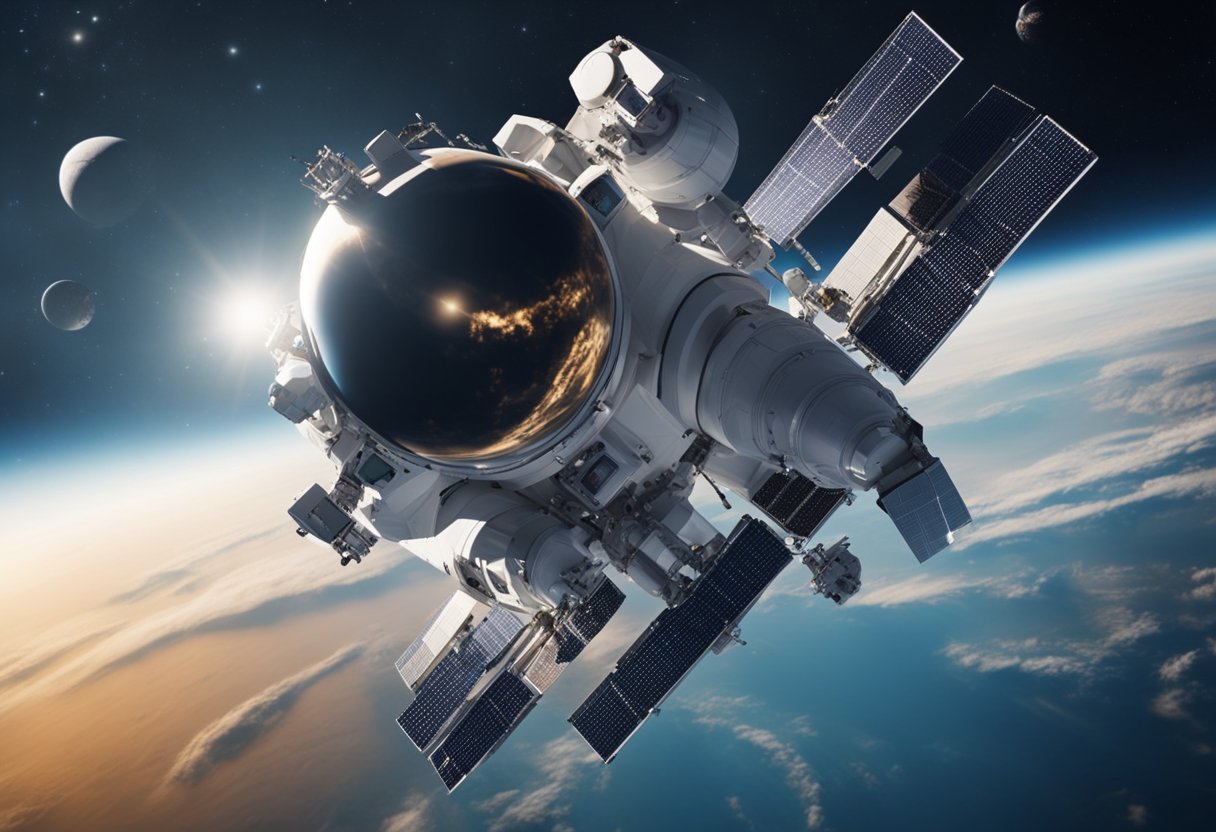
In our pursuit to support human ventures beyond Earth, space medicine has undergone significant advances. These developments encompass various aspects of health monitoring, telemedicine, and medical technology, all shaping the future of healthcare in space.
Our advancements have particularly illuminated the domain of space medicine technology, which is fundamental to astronaut health management. By integrating cutting-edge diagnostics and therapeutic tools, we’ve enabled better health monitoring and disease prevention during space missions.
Biomedical Sensors: Wearable technology has been a game-changer. We employ biomedical sensors actively to track vital signs and physiological responses to microgravity. This technology helps us to detect any health changes in real time, which is crucial in an environment where delayed intervention can be life-threatening.
Telemedicine: It is now possible to conduct sophisticated telemedicine sessions. Through the advancements in communication technology, we’ve established reliable systems for real-time consultations, allowing Earth-based medical teams to assist crew members with medical issues instantly.
Medical Kits: The medical kits onboard spacecraft have become more comprehensive, addressing not only typical terrestrial conditions but also space-specific ailments. They’re equipped with tools that have been tested for effectiveness in low gravity environments.
3D Printing in Space: In a bid to tailor medical solutions on-demand, we’ve been testing 3D printing technology to create personalised medications and potentially the production of spare parts for medical devices.
Pharmaceutical Research: Understanding that certain drugs behave differently in space, we’ve conducted research to validate the efficacy and stability of crucial medications for astronauts.
SpaceVoyageVentures.com: Our website further elaborates on medical technology developments, providing insights into the tangible strides we’ve taken towards safe and healthy space travel. It stands as a testament to our commitment to pioneering a future where space travel will be as reliable and routine as aviation is today.
All these advancements in space medicine technology are not merely abstract achievements but vital steps to assure the well-being of humans as we venture into space, reinforcing our confidence in the future of space exploration.
In our dedication to unpacking the intricacies of human spaceflight, we explore the transformations in the human body during and after space excursions. Our focus encompasses the corporeal and mental adaptations necessitated by this extraterrestrial environment.
During space missions, astronauts commonly experience muscle atrophy and bone density loss. Without Earth’s gravity, muscles and bones are used less, leading to these changes.
Long-term health impacts from extended space travel include increased risks of radiation-induced conditions such as cancer, and problems associated with microgravity, like changes in vision and organ function.
Space radiation can result in significant alterations in cellular and DNA structures, potentially leading to the development of degenerative diseases and increased cancer risk.
Exposed to the harsh space environment, the human body can suffer immediate dangers like acute radiation sickness, temperature extremes, and the effects of decompression.
Microgravity leads to a host of changes, such as altered blood flow and fluids distribution, impacting cardiovascular and other bodily systems.
The psychological effects on astronauts can range from isolation and confinement stress to changes in sleep cycles and cognitive function due to the unusual environment of space.